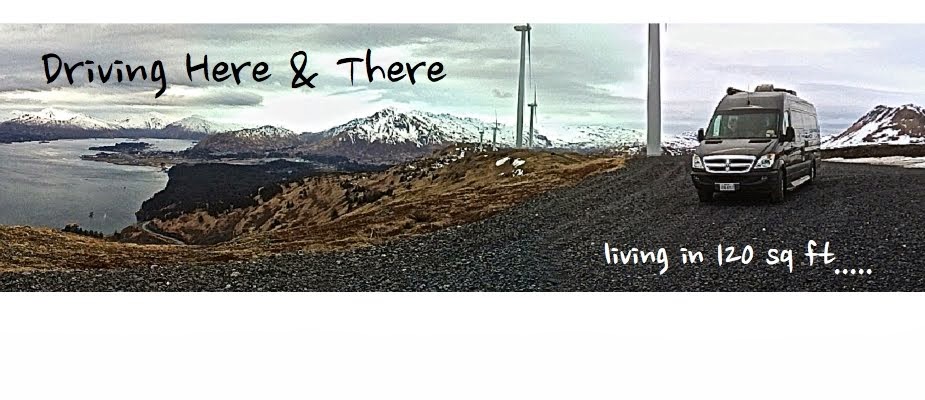The same thing is happening here in Colorado's San Luis Valley.
Didn't think much grows here? Well, it does.
And, yes, this is a desert at 7,600 feet elevation, made up of 8,000 square miles.
The Rocky Mountains split just below the middle of the state, of giving it an arial view a wishbone. With 14,000 foot mountains at it's borders, the Sangre de Cristo Mts. on the east and the San Juan range with Continental Divide on the west, their snows melt into the San Luis Valley.
And the floor of the valley has been very helpful in making this an agricultural mecca.
The surface is very porous. For example, there is a stream near the Great Sand Dunes that often has water from the melting snow running at 7 cubic feet per minute. By the time you walk along this stream about 8 miles, it is flowing at only 3.7. That's because the water has seeped into the underground aquifer.
Here is what the valley floor looks like:
For about a century and a half before that, the descendants of the original Spanish and Mexican settlers dug surface canals to bring water to their crops from where the superficial unconfined aquifer came up onto the ground.
It was this surface water that made this an agricultural valley since the 1850's.
Even today, many small land owners make use of the surface community wells for their personal and planting use.
There is a problem however, with having water so close to the surface: for years people have taken it for granted. They let it run. And, it evaporates.
How much water do we get? Sure there is a lot of melting snow, but we only get 7.5 inches of precipitation yearly. And, 40 inches disappear due to "evapotranspiration". Those are numbers from many years ago. The more you pump up to the surface, the more evaporates. What's worse is that a recent article claims the average temperature here has risen 6 degrees since the 1970's, increasing the evaporation even more.
Anyway…...In the 1950's the deeper "confined" or artesian acquirer was being tapped for more farming.
Now, this is what I see as I drive through this valley: about 1,000 of its 8,000 sq. miles is used in agriculture. There are lots of these circular irrigation systems pumping water from the "confined" or artesian wells.
"Commercial production of potatoes and hay — using 6,000 wells and 2,700 center-pivots to irrigate 120-acre crop circles — exploded after the 1950s.
The pumping has depleted aquifers by more than 1 million acre-feet since 1976 and now is affecting surface streams. One acre-foot approximately serves the needs of two families of four for a year."
Here are 2 pics I got off the internet:
Lts of circles.
Here are 2 pics I got off the internet:
Lts of circles.
This extra pumping has created a problem for the flow into the Rio Grande River. Back in the 50's New Mexico and Texas laid claim to some of this water. In the 70's the courts sided with them and told CO to deliver. That has not occurred.
Recent court actions have led to limitation of water usage here. "By May, center-pivot farmers must activate a plan to reduce the water pulled from the aquifer by about 30,000 acre-feet a year", says the Denver Post article.
The solution proposed is to significantly increase charges for water, to the point that usage is decreased down to the allowed amounts. And those farmers who do not join a water conservation district to monitor their use, are going to have their wells shut down by the state.
People consider this serious. Some, perhaps because this is where the hops come from for Coors beer.
Others see it as serious because 80,000 acres are likely to come out of production. And here we have the poorest county in the nation. In one district, where 38% of the children live in poverty, 40,000 acres or 25% of all production, is likely to be shut down in the next 5 years.
Some don't think curtailing crop production here is bad. About 10-12 years ago articles in Colorado newspapers said that 75% of the state's water was used in agriculture; and, if we were to shut down agriculture in the state, we could triple the state's number of people who could live on the water we were using for agriculture. Denver in the late 1980's and early 1990's tried in court to force SLV water to be piped through the mountains to their city. New Mexico had the same type of articles appear in their paper about 6-8 years ago: farming took 60% of the state's water and the they could double or triple the state's population if they shut agriculture down in that state. Same push; just a little different percentages.
And about 30 years ago, the Texas Land Commissioner is said to have claimed that they could produce 2 -3 times the amount of crops down in t he Lower Rio Grande Valley (where I grew up, down by McAllen and Brownsville, Texas) with the water used in the SLV. Don't ask me how much would evaporate while flowing nearly 1,900 miles form the Rio Grande's starting point down to their valley at the Gulf of Mexico.
Yes, there is water under our desert, and lots of people want it.
For the time being, the pressure is on SLV to pump less for irrigation, so less evaporates, and more flows down the currently frozen Rio Grande
…assuming Denver or CO Springs don't tap into this aquifer first.
Get more from these articles at
http://www.denverpost.com/ci_19756115
http://geosurvey.state.co.us/education/Documents/Hydrogeology_of_the_San_Luis_Valley,Colorado_-_An_Overview_-_and_a_Look_at_the_Future.PDF
http://www.circleofblue.org/waternews/2012/world/food-vs-water-high-commodity-prices-complicate-aquifer-protection-in-colorados-san-luis-valley/
http://geosurvey.state.co.us/education/Documents/Hydrogeology_of_the_San_Luis_Valley,Colorado_-_An_Overview_-_and_a_Look_at_the_Future.PDF
http://www.circleofblue.org/waternews/2012/world/food-vs-water-high-commodity-prices-complicate-aquifer-protection-in-colorados-san-luis-valley/


















































